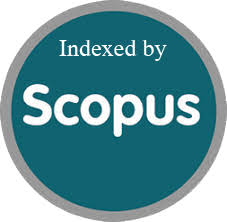Physico-Mechanical Properties of High-Strength Concrete Containing Supplementary Cementitious Materials Subjected to Acid Attack
Abstract
This study investigates the resistance of high-strength concrete (HSC) to sulfuric acid exposure, focusing on its application in constructing floors in acid storage plants, sewage manholes, and other areas exposed to acid. The aggressive chemical attack from acids poses a significant threat to concrete durability and strength. The study also examines the effect of supplementary cementitious materials (SCMs) on enhancing the resistance of HSC to acid attack. Six HSC mixtures were evaluated: two control mixes, two mixes contained 25% cement replacement, one using fly ash Type-F and others using slag. Three mixes have been cured in water for 3 days, while others have been cured in water for 28 days. All mixtures were immersed in a 3% sulfuric acid solution for a period of 28 or 56 days. To assess concrete deterioration, compressive strength, tensile strength, and weight loss were measured. The study demonstrated that exposure to sulfuric acid caused significant surface erosion on HSC. All HSC mixtures experienced strength loss, especially the control mix. The presence of slag enhanced the acid resistance of HSC, particularly for the 3-day cured specimens. While the presence of fly ash enhanced the acid resistance of HSC for the 28-day cured specimens
References
- V. r. Zivica and A. Bajza, "Acidic attack of cement based materialsa review.: Part 1. Principle of acidic attack," Construction and Building materials, vol. 15, no. 8, pp. 331-340, 2001. https://doi.org/10.1016/S0950-0618(01)00012-5
- K. J. Rao, K. Keerthi, and S. Vasam, "Acid resistance of quaternary blended recycled aggregate concrete," Case studies in construction materials, vol. 8, pp. 423-433, 2018. https://doi.org/10.1016/j.cscm.2018.03.005
- A. L. T. Torres, L. M. S. d. Souza, M. I. P. d. Silva, and F. de Andrade Silva, "Concrete degradation mechanisms by sulfuric acid attack," Magazine of Concrete Research, vol. 71, no. 7, pp. 349-361, 2019. https://doi.org/10.1680/jmacr.18.00194
- Y. Aygrmez and O. Canpolat, "Long-term sulfuric and hydrochloric acid resistance of silica fume and colemanite waste reinforced metakaolin-based geopolymers," Revista de la construccin, vol. 20, no. 2, pp. 291-307, 2021. https://doi.org/10.7764/rdlc.20.2.291
- A. H. Ali and A. K. Ibrahim, "Mechanical Properties of Reactive Powder Concrete (RPC) Exposed to Acidic Solutions," Tikrit Journal of Engineering Sciences, vol. 21, no. 3, pp. 55-62, 2014. https://doi.org/10.25130/tjes.21.3.07
- A. Dhundasi, R. Khadiranaikar, A. Momin, and K. Motagi, "An Experimental Investigation on Durability Properties of Reactive Powder Concrete," International Journal of Engineering, vol. 35, no. 2, pp. 327-336, 2022. https://doi.org/10.5829/ije.2022.35.02b.08
- E. Mohseni, W. Tang, and H. Cui, "Chloride diffusion and acid resistance of concrete containing zeolite and tuff as partial replacements of cement and sand," Materials, vol. 10, no. 4, p. 372, 2017. https://doi.org/10.3390/ma10040372
- ACI Committee 363 (2010).'High-Strength Concrete'(ACI 363R).,228.
- "I.Q.S, No.5, 1984. Iraqi Standard Specification, Portland cement.."
- ASTM International. C1240-20, Standard Specification for Silica Fume Used in Cementitious Mixtures; ASTM International: West Conshohocken, PA, USA, 2020.
- ASTM International. C618-19 Standard Specification for Coal Fly Ash and Raw or Calcined Natural Pozzolan for Use in Concrete; ASTM International: West Conshohocken, PA, USA, 2019. https://doi.org/10.1520/c0618-12a
- S. Goyal, M. Kumar, D. S. Sidhu, and B. Bhattacharjee, "Resistance of mineral admixture concrete to acid attack," Journal of Advanced Concrete Technology, vol. 7, no. 2, pp. 273-283, 2009. https://doi.org/10.3151/jact.7.273
- BS EN 15167-1:2006; Ground Granulated Blast Furnace Slag for Use in Concrete, Mortar and Grout. Part 1: Definitions, Specifications and Conformity Criteria. BSI Standard Limited: London, UK, 2006.
- "IOS No.45/1984, Iraqi Specification, "Aggregate from natural sources for concrete and construction", Central agency for standardization and quality control, Baghdad, 1984.."
- "ASTM C192/C192M-15. Standard Practice for making and Curing Concrete Test Specimens in the Laboratory; ASTM International: West Conshohocken, PA, USA, 2015.."
- "ASTM C143/C143M-15a. Standard Test Method for Slump of Hydraulic-Cement Concrete; ASTM International:
- BS EN 12390-3:2019; Testing Hardened Concrete. Part 3: Compressive Strength of Test Specimens. BSI Standard Limited: London, UK, 2019.
- ASTM C496/C496M-17; Standard Test Method for Splitting Tensile Strength of Cylindrical Concrete Specimens. American Society for Testing and Materials International: West Conshohocken, PA, USA, 2017; p. 5.
- M. M. Johari, J. Brooks, S. Kabir, and P. Rivard, "Influence of supplementary cementitious materials on engineering properties of high strength concrete," Construction and Building Materials, vol. 25, no. 5, pp. 2639-2648, 2011. https://doi.org/10.1016/j.conbuildmat.2010.12.013
- 98/00323 Fly ash in concrete: Production, properties and uses, Fuel and Energy Abstracts, vol. 39, no. 1, p. 26, Jan. 1998. https://doi.org/10.1016/0140-6701(98)94358-2
- S. Virgalitte, M. Luther, J. Rose, and B. Mather, "ACI 233R-95, Ground Granulated Blast-Furnace Slag as a Cementitious Constituent in Concrete," American Concrete Institute, Farmington Hills, Michigan, 1995. https://doi.org/10.14359/1125
- H.-W. Song and V. Saraswathy, "Studies on the corrosion resistance of reinforced steel in concrete with ground granulated blast-furnace slagAn overview," Journal of Hazardous materials, vol. 138, no. 2, pp. 226-233, 2006. https://doi.org/10.1016/j.jhazmat.2006.07.022
- P. C. Association, "Types and causes of concrete deterioration," Portland Cement Association: Skokie, IL, USA, 2002.
- R. A. T. Cahyani and Y. Rusdianto, "Concrete Performance with Ground Granulated Blast Furnace Slag as Supplementary Cementitious Materials," in IOP Conference Series: Materials Science and Engineering, 2020, vol. 771, no. 1: IOP Publishing, p. 012062. https://doi.org/10.1088/1757-899x/771/1/012062
- M. Kewalramani and A. Khartabil, "Porosity evaluation of concrete containing supplementary cementitious materials for durability assessment through volume of permeable voids and water immersion conditions," Buildings, vol. 11, no. 9, p. 378, 2021. http://dx.doi.org/10.3390/buildings11090378
- D. N. Richardson, "Strength and durability characteristics of a 70% ground granulated blast furnace slag (GGBFS) concrete mix," 2006.
- P. W. Leung and H. Wong, "Final Report on durability and strength development of ground granulated blast furnace slag concrete," Geotechnical Engineering office, Civil Engineering and, 2010.
- P. Munjal, K. K. Hau, and C. C. H. Arthur, "Effect of GGBS and curing conditions on strength and microstructure properties of oil well cement slurry," Journal of Building Engineering, vol. 40, p. 102331, 2021. http://dx.doi.org/10.1016/j.jobe.2021.102331
- V. M. Malhotra, M.-H. Zhang, P. H. Read, and J. Ryell, "Long-term mechanical properties and durability characteristics of high-strength/high-performance concrete incorporating supplementary cementing materials under outdoor exposure conditions," Materials Journal, vol. 97, no. 5, pp. 518-525, 2000. https://doi.org/10.14359/9284
- J. Sun, X. Shen, G. Tan, and J. E. Tanner, "Compressive strength and hydration characteristics of high-volume fly ash concrete prepared from fly ash," Journal of Thermal Analysis and Calorimetry, vol. 136, pp. 565-580, 2019. http://dx.doi.org/10.1007/s10973-018-7578-z
- C. Herath, C. Gunasekara, D. W. Law, and S. Setunge, "Performance of high volume fly ash concrete incorporating additives: A systematic literature review," Construction and Building Materials, vol. 258, p. 120606, 2020. http://dx.doi.org/10.1016/j.conbuildmat.2020.120606
- G. Li and X. Zhao, "Properties of concrete incorporating fly ash and ground granulated blast-furnace slag," Cement and concrete composites, vol. 25, no. 3, pp. 293-299, 2003. https://doi.org/10.1016/s0958-9465(02)00058-6
- S. S. S. A. Nedunuri, S. G. Sertse, and S. Muhammad, "Microstructural study of Portland cement partially replaced with fly ash, ground granulated blast furnace slag and silica fume as determined by pozzolanic activity," Construction and Building Materials, vol. 238, p. 117561, 2020. https://doi.org/10.1016/j.conbuildmat.2019.117561
- S. M. Joorabchian, "Durability of concrete exposed to sulfuric acid attack," Theses and dissertations. Presented to Ryerson University, Toronto, Ontario, Canada, vol. 184, 2010. https://doi.org/10.32920/ryerson.14654622.v1
- N. Fattuhi and B. Hughes, "The performance of cement paste and concrete subjected to sulphuric acid attack," Cement and Concrete Research, vol. 18, no. 4, pp. 545-553, 1988. https://doi.org/10.1016/0008-8846(88)90047-6
- T. Bakharev, J. G. Sanjayan, and Y.-B. Cheng, "Resistance of alkali-activated slag concrete to acid attack," Cement and Concrete research, vol. 33, no. 10, pp. 1607-1611, 2003. https://doi.org/10.1016/s0008-8846(03)00125-x
- K. Kawai, S. Yamaji, and T. Shinmi, "Concrete deterioration caused by sulfuric acid attack," in International Conference on Durability of Building Materials and Components, 2005: LYON [France] Lyon, pp. 17-20.
- S. Barbhuiya and D. Kumala, "Behaviour of a sustainable concrete in acidic environment," Sustainability, vol. 9, no. 9, p. 1556, 2017. https://doi.org/10.3390/su9091556
- M. Anusiya and S. Oviya, "Comparative study on reactive powder concrete with high strength concrete," International Journal of Innovative Research in Science Engineering and Technology, vol. 6, no. 10, pp. 19868-19875, 2017.
- West Conshohocken, PA, USA, 2015.."








